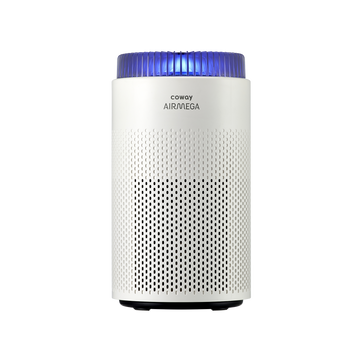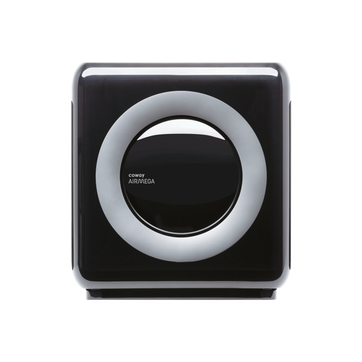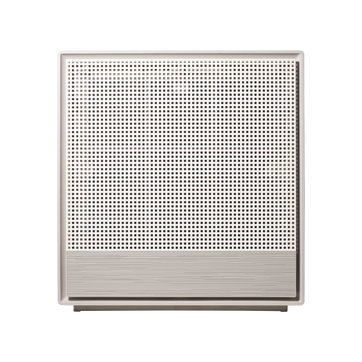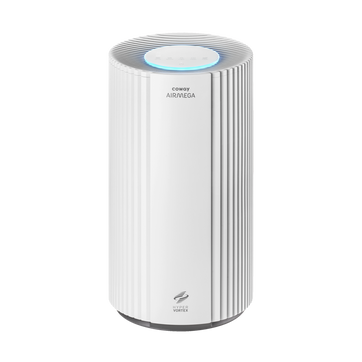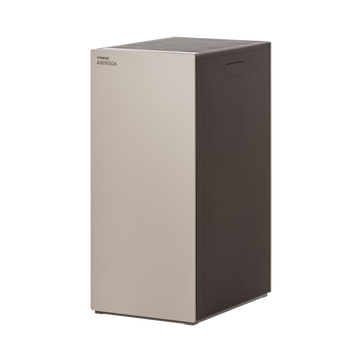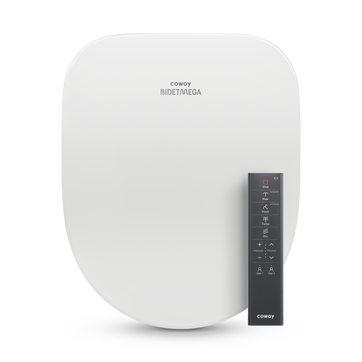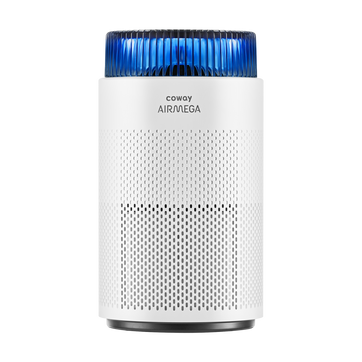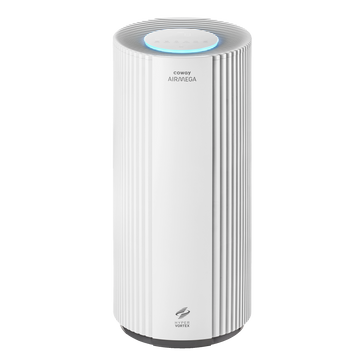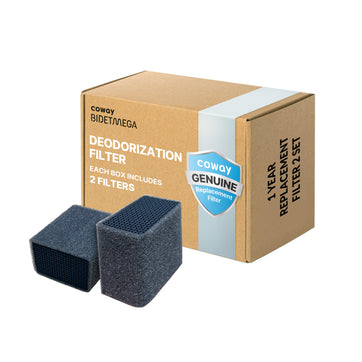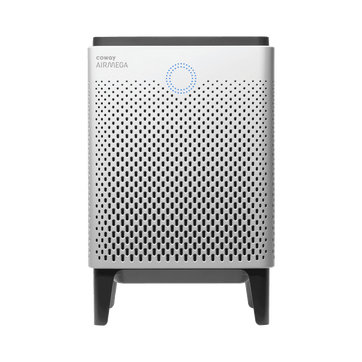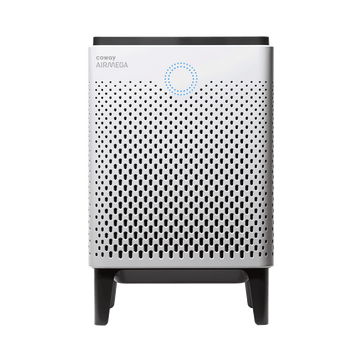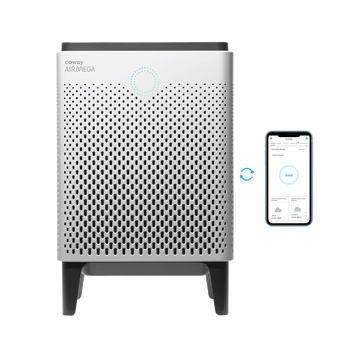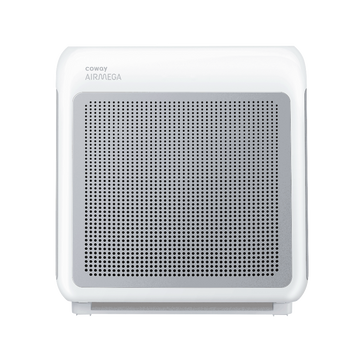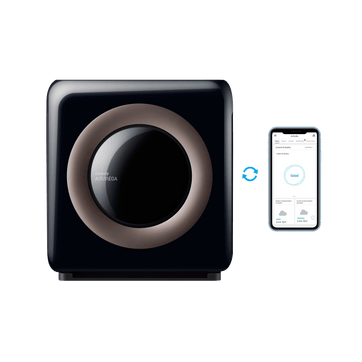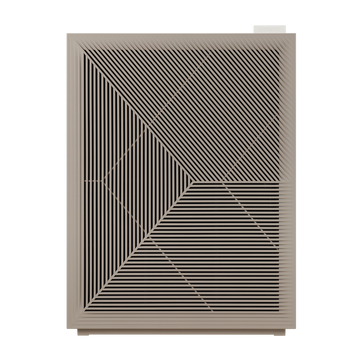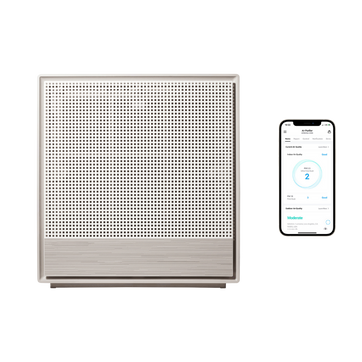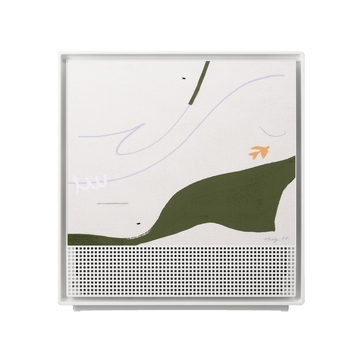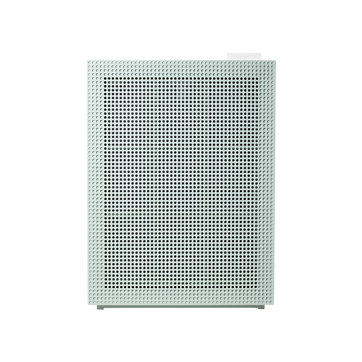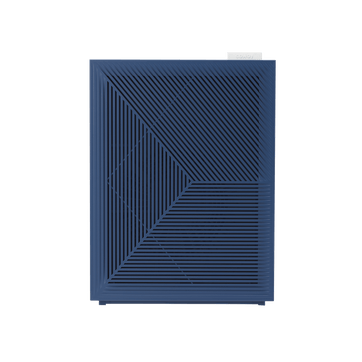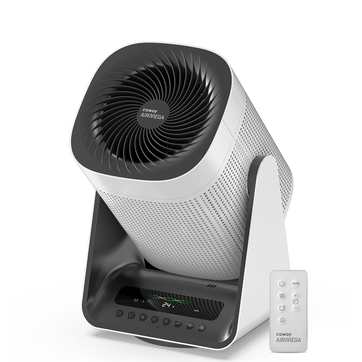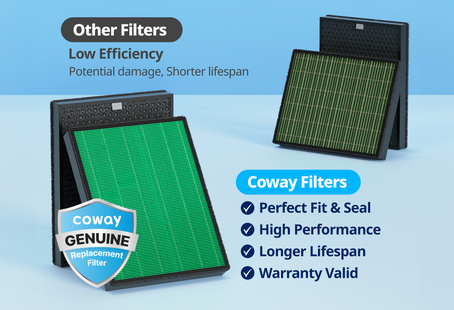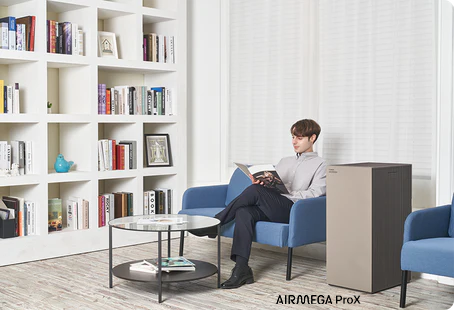
What is a HEPA filter?
Think about the long list of important terms, buzzwords, and acronyms in your life that you haven’t quite wrapped your brain around: FDIC-insured, Big Data, Organic, to name a few. If you’ve ever bought an air purifier or vacuum, you can probably add “HEPA” to that list.
But what is a HEPA filter? How does it work?
What does HEPA stand for?
HEPA, which stands for High Efficiency Particulate Air filter, is a designation used to describe filters that are able to trap 99.97² percent of particles that are 0.3 microns.
These filters are evaluated using minimum efficiency reporting values (MERVs), which help consumers understand a filter's effectiveness at capturing particles of different sizes.
Where did HEPA come from?
Though the HEPA standard and certification process wasn’t established until 1983, development of HEPA filters dates back to World War II, when American scientists with the Manhattan Project created the first HEPA filter to capture radioactive particles released during the creation of the atomic bomb.
The test method developed during this period became the foundation for modern HIgh Efficiency Particulate Air standards. After the war, air conditioning engineers played a crucial role in developing standardized testing methods for these filters.
Why 0.3 microns?
That micron size (0.3) is referred to by scientists as the MPPS, or the most penetrating particle size. Scientists have found that particles of that size evade air filters more than larger or smaller particles. We’ll get into why in a little bit.
Interestingly, a HEPA air filter is even more efficient at capturing particles both larger and smaller than 0.3 microns, making them extremely effective at improving indoor air quality across a wide range of particle sizes.
How do HEPA air filters work? What are they made from?
Most modern HEPA filters consist of interlaced glass fibers that are twisted and turned in myriad directions to create a fibrous maze.
Picture these glass fibers as being thinner than a strand of spider silk. We're talking incredibly tiny here, about 50 times thinner than a human hair. When they're all matted together, they create a sheet about as thick as a few sheets of paper. But don't let that fool you - these fibers aren't neatly lined up like strings on a tennis racket. Instead, they're jumbled together in a chaotic pattern, creating a filter that's both incredibly dense and still porous enough for air to flow through.
As air is forced through this filtration system, particles become trapped through multiple layers. The density and arrangement of these fibers are precisely engineered to maximize particle capture while maintaining adequate airflow.
As particles traverse this web, they’re taken out of circulation in the following ways.

Direct Impaction: Large contaminants, such as certain types of dust, mold, and pollen, travel in a straight path, collide with a fiber, and stick to it. Think of these larger particles as being like a baseball thrown at a chain-link fence - they're too big and moving too fast to do anything but smack right into it. This is how your HEPA air filter catches the particles you might actually be able to see: those annoying dust bunnies floating in sunlight, pet dander that makes you sneeze, and even some bacteria that might be lurking in your air.
Sieving: The air stream carries a particle between two fibers, but the particle is larger than the gap, so it becomes ensnared. This process works similarly to a kitchen strainer, where the spaces between fibers act as a physical barrier. The random arrangement of fibers creates countless small gaps, typically ranging from 0.5 to 2.0 microns, which effectively trap particles larger than the spaces between fibers.
Interception: Airflow is nimble enough to reroute around fibers, but, thanks to inertia, particles continue on their path and stick to the sides of fibers. This mechanism is most effective for medium-sized particles (0.5-1.0 microns) that follow the airstream but are large enough to contact fibers as they pass by. When these particles come within one particle radius of a fiber, they're likely to be captured through van der Waals forces, which are weak intermolecular forces that become significant at these microscopic scales.
Diffusion: Small, ultrafine particles move more erratically than larger ones, so they’re more likely to hit and stick to fibers. This process, known as Brownian motion, is effective for particles smaller than 0.1 microns. These tiny particles bounce around randomly due to collisions with gas molecules in the air, increasing their chances of contacting and adhering to filter fibers. This explains why HEPA filters are actually more efficient at capturing particles smaller than 0.3 microns - their erratic movement makes them more likely to be trapped.
Think of it as a multi-layer security system, where each method catches different troublemakers trying to sneak through your air. Together, these four capture methods are what give HEPA filters their famous 99.97%² efficiency rating for those pesky 0.3-micron particles we talked about earlier.
What about when particles penetrate a HEPA air filter? Are they going straight to my lungs?
Don’t worry. There are other technologies that work in concert with HEPA filters to ward off many super-small contaminants, such as smoke, fumes, and other chemicals. Activated carbon filters, like those in Airmega’s Max2 filters for example, use small pores to capture some chemicals, odors, and smoke that a HEPA filter might not catch. It's important to note that HEPA filters alone cannot filter out gases and odor molecules - this is why the combination with activated carbon filters is so important for comprehensive air purification.
I keep hearing the term True HEPA. Are there different forms of HEPA?
There are quite a few terms marketers use to describe air filters. While True HEPA is technically a marketing term, it’s used by many to differentiate between American and European HEPA standards. Understanding a filter's reporting values or MERVs is crucial when evaluating different HEPA products. The test method developed for True HEPA certification ensures consistent standards across all certified filters.
In Europe, a filter only needs to capture 85 percent of particles sized at 0.3 microns—compared to the 99.97-percent U.S. standard—to be HEPA-certified. The American standard is, thus, often referred to as “True HEPA.” “HEPA-type,” “Ultra HEPA,” and other HEPA variations aren’t recognized by the accrediting bodies in the U.S. or Europe.
Learn more about Cowaymega's Green True HEPA™ here.
What if a filter advertises itself as capable of capturing 99.9 percent of small or large particles—that’s good, right?
Not necessarily. A filter that says it can suck up 99.9 percent of large particles may be poor at capturing ultra-fine ones. Likewise, a filter that touts its ability to trap the smallest of particles isn’t telling you how well it captures particles that are 0.3 microns, which we know are the most troublesome.
What are the health benefits of HEPA filters?
These microscopic-particle-catching champions don't just clean your air – they can actually make a real difference in your day-to-day health.
Let's break down what these filters can do for you.
Indoor Allergy Relief
If you're one of the millions who battle with indoor allergies, a HEPA air filter is like having a tiny cleaning crew working 24/7. It captures the usual suspects: pet dander, dust mites, and pollen (that somehow sneaks in even when your windows are closed). Many allergy sufferers report fewer symptoms like sneezing, itchy eyes, and runny noses after installing HEPA filters in their homes.
Asthma Management
For people with asthma, breathing clean air isn't just a preference – it's a necessity. HEPA filters remove many of the airborne particles that can trigger asthma attacks, helping to create a safer breathing environment. Think of it as creating a clean-air sanctuary in your home.
Respiratory Health for Everyone
Even if you don't have allergies or asthma, your lungs will thank you. HEPA filters catch microscopic airborne particles that can irritate your airways and cause inflammation, including:
- Airborne bacteria and some virus carriers
- Smoke particles from the neighbor's barbecue or nearby wildfires
- Those invisible bits of dust that somehow appear right after you finish cleaning
- Mold spores that love to hitch a ride on humid air
Better Sleep
Here's something you might not expect – when you're breathing cleaner air, you often sleep better too. Less nighttime congestion means more restful sleep, and who doesn't want that?
Long-term Health Benefits
While you might not see them, those tiny airborne particles HEPA filters catch could otherwise end up in your lungs. By removing these particles from your air, HEPA filters help reduce your exposure to potentially harmful pollutants over time.
Where are HEPA filters used?
Like in the Manhattan Project, HEPA filters were originally intended to be used in lab and factory settings. But these super-effective filters have come a long way from their top-secret origins.
While efficient particulate air filters were originally developed for industrial use, you'll find them almost everywhere clean air is a priority, from hospitals to your living room. Here's where you might encounter HEPA filters in your daily life:
-
In Your Home: You'll find HEPA technology in places like air purifiers, but also in your vacuum cleaner, modern HVAC systems, and even some high-end clothes dryers that use HEPA filtration to capture extra-fine lint particles.
-
In Your Car: Modern vehicles use HEPA filters not just in basic cabin air filters, but also in sophisticated air purification systems – especially in electric vehicles where clean-air technology is often a standard feature.
-
In Medical Settings: Hospitals rely heavily on HEPA filtration, from operating rooms to isolation units. You'll also find them in dental offices and medical research labs where clean air isn't just about comfort – it's about safety.
-
In Commercial Spaces: Next time you're in a high-end hotel or an airplane, chances are you're breathing HEPA-filtered air. These filters help keep recycled air clean and fresh in enclosed commercial spaces.
-
In Industrial Settings: True to their roots, HEPA filters are still workhorses in industrial settings. From nuclear facilities to microchip production clean rooms, anywhere that needs ultra-clean air relies on HEPA technology.
It's pretty amazing how a technology developed for a single, highly specialized purpose has become such an important part of our everyday lives. From keeping astronauts' air clean in spacecraft to helping you breathe easier at home, HEPA filters have certainly earned their place in modern life.
How do I maintain my HEPA filter?
Regular maintenance is crucial for HEPA filters to function effectively. Most air purifiers come with indicator lights that let you know when it's time for a filter change. Periodic inspection and replacement are necessary to maintain their high efficiency. According to air conditioning engineers, when HEPA filters become clogged with particles, their performance significantly decreases. Not only does this reduce airflow through the filter, but it also decreases their filtering effectiveness.
Most manufacturers provide specific guidelines for when to replace filters, but visual inspection and monitoring your device's performance can also help determine when replacement is needed.
Learn more about how Airmega is changing the way we breathe, and stay up to date on the latest news by signing up for our newsletter.
Disclaimers
1Coway air purifiers have been proven to trap dust, pollen, dander, viruses and bacteria in the air based on KCL (Korea Conformity Laboratories) testing.They have been tested in a 30㎥ size chamber according to the Korea Air Cleaning Association standard (SPS-KACA 002-132:2022 Modified) to measure the 0.01㎛ size of particle removal rate. It was tested on maximum airflow speed in normal room temperature and humidity conditions. The performance may vary in the actual living environment of customers.
→ Tested with Airmega Aim, 50, 100, 150, 160, Tower AP-1216L, Mighty AP-1512HH, MightyS AP-1512HHS, 200M, Icon, IconS, 230, 240, 250, 250 Art, 250S, 300, 300S, 350, 400, 400S, 450, ProX
299.97% of viruses, bacteria, fungi and pollen were verified to be removed from the air for Coway air purifiers which have Green True HEPA™ filter applied based on the Japan Food Research Laboratories(JFRL) testing according to JEM 1467 standard.
→ Tested with Coway Airmega Mighty AP-1512HH, MightyS AP-1512HHS, 250, 250 Art, 250S, 300, 300S, 400, 400S
→ All tested by JFRL and received above result within below time.
4The concentration of ammonia, acetaldehyde and acetic acid were proven to be removed within 30 minutes by FCG Research Institute, Inc. Human Life Science Lab. It is not a demonstration result in the actual use space. Not all odors and gases may be supported. → Tested with Coway Airmega 150, 160, Mighty AP-1512HH, MightyS AP-1512HHS, 400, 400S
5The coverage area of the air purifier is based on an area where the air cleaner can make two air changes per hour (ACPH). An air change per hour translates to how many times an air purifier can clean an area, assuming the height of a ceiling to be 8 ft, in one hour. Therefore ** means two air changes per hour means that the cleaner can clean the area once every 30 minutes and * means air changes per hour means that the air purifier can clean the area once every 60 minutes.
10Terms and conditions apply. Discounts, including promotions, coupons, bundle discount and subscription discount, cannot be stacked on top of other coupons. During promotional periods, discount codes will not be able to be applied to orders. Promo codes may apply to products only—filters, accessories, and new products within 3 months of the release date are not included.
11Based on Coway R&D internal laboratory testing, activated carbon filtration was shown to remove up to 95% of ammonia odors within 40 minutes, and up to 99% of fecal odors within 20 minutes. Actual performance may vary depending on usage conditions.
